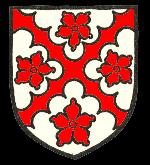Luton possessed, at various times twenty five manors. The histories of all these manors are given in the Victoria County History for Bedfordshire, published in 1908 and due to be updated early in the 21st century.
Woodcroft Manor was the result of dividing the medieval Manor of Luton into six parts on the death of Isabel de Clare, wife of William Ferrers, Earl of Derby in 1275 - one share going to each of her daughters. Woodcroft was the share of Eleanor de Leyburne but was not known as Woodcroft until a little later.
Eleanor's one sixth share seems to have been sold almost immediately to Walter de Mandeville who was described as owning 153 acres at Woodcroft together with £9/6/11½ per annum in quitrents in 1288. Walter's heir was his sister Sibil, wife of Henry de Boderigan but by 1310 the manor was held by John le Poer and in that year he granted Woodcroft Manor, as it was now known, to Robert de Kendale.
Kendale died in 1330, leaving as heir his son, Edward who, in 1372, conveyed the manor to trustees. He died the next year and both his sons died without issue in 1375 and their sister Beatrice, wife of Sir Robert Turk, inherited the property. On Turk's death in 1400 his daughter by Beatrice, Joan, wife of John Waleys succeeded him at Woodcroft. Her heir was her eldest daughter, another Beatrice, wife of Reginald Cockayne of Bury Hatley. On Cockayne's death Beatrice married William Milreth, alderman of London and on her death in 1448 Woodcroft Manor passed to her son John Cockayne who died in 1490.

Napier coat of arms
Cockayne's widow Joan held the manor at her death in 1507 when Edmund Cockayne succeeded to the estate. In 1522 William Markham and Frances, his wife (Née Cockayne) conveyed the manor to John Markham and at some point between 1584 and 1630 the manor passed to Edward Wingate, who also owned Woodcroft alias Halyards. In 1653 Wingate conveyed both the Woodcroft manors to Robert Napier, effectively reuniting it with the other four sixths of the medieval Manor of Luton, though both manors maintained a separate identity, although in the same ownership. However, a succession of Law of Property Acts in the 1920s effectively abolished manors in all but name. including copyhold land and manorial courts and income.